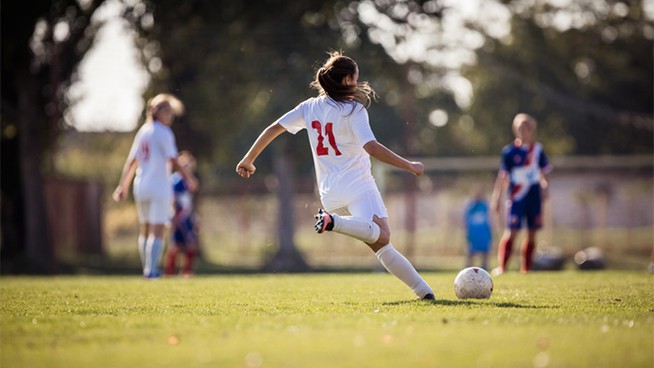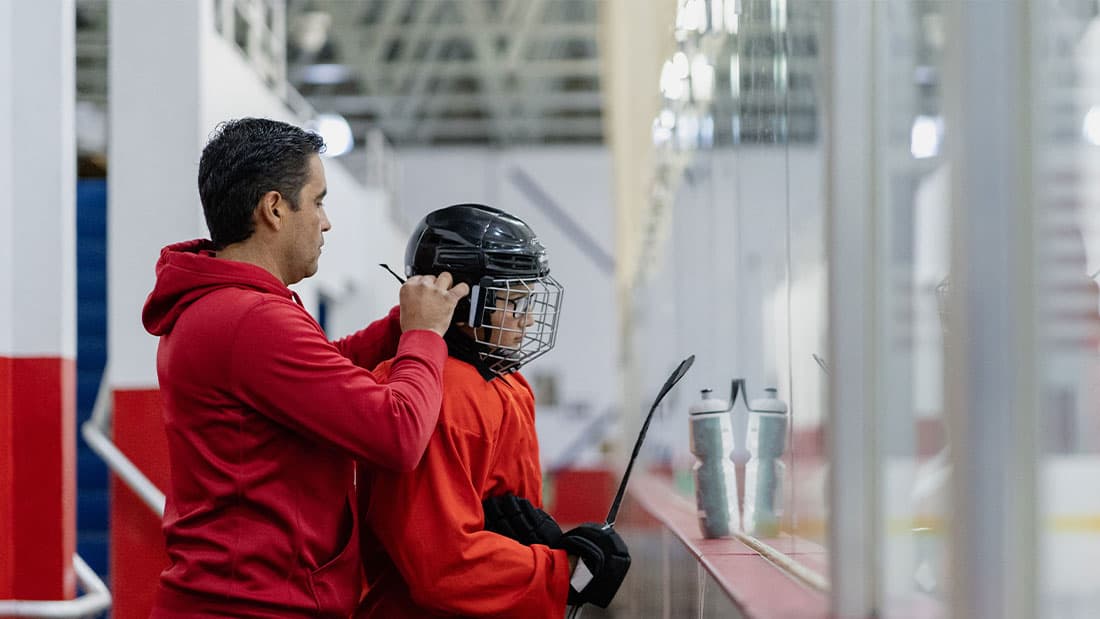Improve Agility With Skills-Based Drills, Part 2: The Box Drill and T-Drill
In this agility drill series, we will break down three common drills and how you can adapt them to your sport. Today we break down the Box Drill and T-Drill.
Being fast on the field is not just about running in a straight line. You need to be agile—able to quickly decelerate, accelerate and move in different directions.
The best way to develop agility is to perform drills that closely mimic what you experience in your sport. However, you shouldn’t jump into advanced drills; instead, progress through various levels to build the necessary agility fundamentals. Once the fundamentals are established, you can challenge your body to become the fastest player on the field.
Drill 1
Box Drill, Level One
The Box Drill will improve all the fundamentals of agility to make you a better athlete on the field. It should be performed during your agility workouts. When performing the drill, watch the video above, and keep three things in mind:
- Stop as quickly as possible at each cone
- Stay tight to cones
- Keep head up and maintain solid, balanced position
Sets/Duration: 4-6×10-30 seconds
Box Drill, Level Two
Once you have performed the Box Drill for eight to 12 weeks, you can make it more challenging by adding a ball. A basketball or soccer player can dribble through the drill; a football, baseball and softball player can catch and throw a ball while performing the drill.
Box Drill, Level Three
After performing level two for eight to 12 weeks, you are ready to move to the next level. For this drill, you need six cones and a partner. Add the two extra cones to the pattern to create a second, adjacent box.
- Assume athletic position in box, facing partner in opposite box
- Partner sprints randomly within box; mirror partner’s movement
- Perform for specified time; switch positions with partner
Sets/Duration: 4-6×10-30 seconds each position
Drill 2
T-Drill, Level One
The T-Drill develops your ability to start, stop, move side-to-side and change directions—essential skills in every sport. Perform this during your agility workouts. When performing this drill, keep these factors in mind, and check out the video at the top:
- Sprint as explosively as possible
- When stopping, push hips back and chop steps to maintain balance
- When shuffling, push hips back and keep weight on balls of feet
Sets/Reps: 3-5×1
T-Drill, Level Two
After you have performed level one for eight to 12 weeks, it’s time to make this drill more difficult by making it unpredictable. This variation is set up just like in level one, the difference being that you need a partner to stand at cone two. As you approach cone two, your partner will instruct you on which direction to shuffle first.
T-Drill, Level Three
After you have performed level two for eight to 12 weeks, it’s time to make the drill more difficult by adding a ball. This variation is set up like level two. Your partner will pass you the ball at cone three. Finish drill with control of the ball.
Photo: goodenergytraining.com
John M. Cissik is the president of Human Performance Services, LLC, which helps athletics professionals solve their strength and conditioning problems. He has worked with all levels, produced four videos, written 10 books and more than 70 articles on strength and speed training. For more information, follow him on Twitter (@yourhpservices).
RECOMMENDED FOR YOU
MOST POPULAR
Improve Agility With Skills-Based Drills, Part 2: The Box Drill and T-Drill
In this agility drill series, we will break down three common drills and how you can adapt them to your sport. Today we break down the Box Drill and T-Drill.
Being fast on the field is not just about running in a straight line. You need to be agile—able to quickly decelerate, accelerate and move in different directions.
The best way to develop agility is to perform drills that closely mimic what you experience in your sport. However, you shouldn’t jump into advanced drills; instead, progress through various levels to build the necessary agility fundamentals. Once the fundamentals are established, you can challenge your body to become the fastest player on the field.
Drill 1
Box Drill, Level One
The Box Drill will improve all the fundamentals of agility to make you a better athlete on the field. It should be performed during your agility workouts. When performing the drill, watch the video above, and keep three things in mind:
- Stop as quickly as possible at each cone
- Stay tight to cones
- Keep head up and maintain solid, balanced position
Sets/Duration: 4-6×10-30 seconds
Box Drill, Level Two
Once you have performed the Box Drill for eight to 12 weeks, you can make it more challenging by adding a ball. A basketball or soccer player can dribble through the drill; a football, baseball and softball player can catch and throw a ball while performing the drill.
Box Drill, Level Three
After performing level two for eight to 12 weeks, you are ready to move to the next level. For this drill, you need six cones and a partner. Add the two extra cones to the pattern to create a second, adjacent box.
- Assume athletic position in box, facing partner in opposite box
- Partner sprints randomly within box; mirror partner’s movement
- Perform for specified time; switch positions with partner
Sets/Duration: 4-6×10-30 seconds each position
Drill 2
T-Drill, Level One
The T-Drill develops your ability to start, stop, move side-to-side and change directions—essential skills in every sport. Perform this during your agility workouts. When performing this drill, keep these factors in mind, and check out the video at the top:
- Sprint as explosively as possible
- When stopping, push hips back and chop steps to maintain balance
- When shuffling, push hips back and keep weight on balls of feet
Sets/Reps: 3-5×1
T-Drill, Level Two
After you have performed level one for eight to 12 weeks, it’s time to make this drill more difficult by making it unpredictable. This variation is set up just like in level one, the difference being that you need a partner to stand at cone two. As you approach cone two, your partner will instruct you on which direction to shuffle first.
T-Drill, Level Three
After you have performed level two for eight to 12 weeks, it’s time to make the drill more difficult by adding a ball. This variation is set up like level two. Your partner will pass you the ball at cone three. Finish drill with control of the ball.
Photo: goodenergytraining.com
John M. Cissik is the president of Human Performance Services, LLC, which helps athletics professionals solve their strength and conditioning problems. He has worked with all levels, produced four videos, written 10 books and more than 70 articles on strength and speed training. For more information, follow him on Twitter (@yourhpservices).












